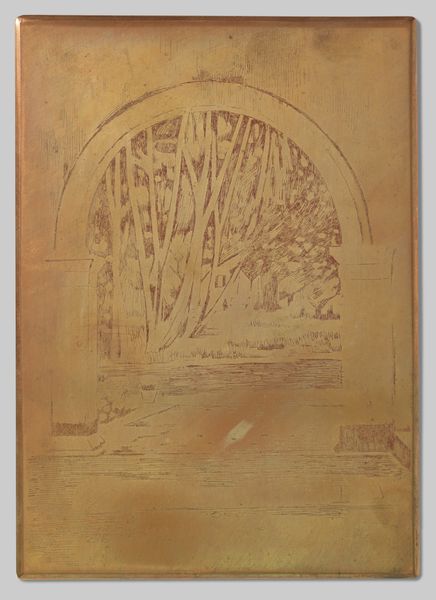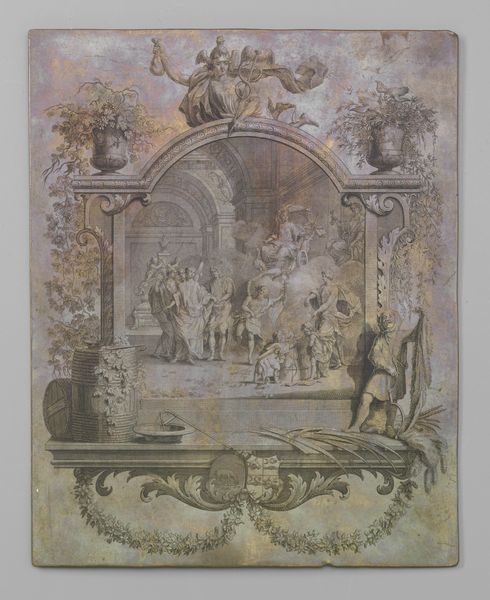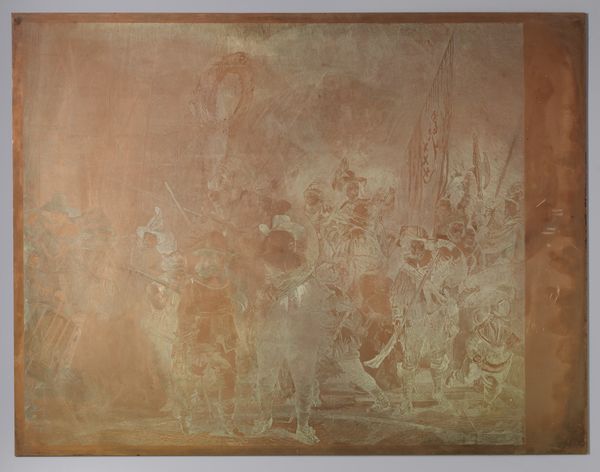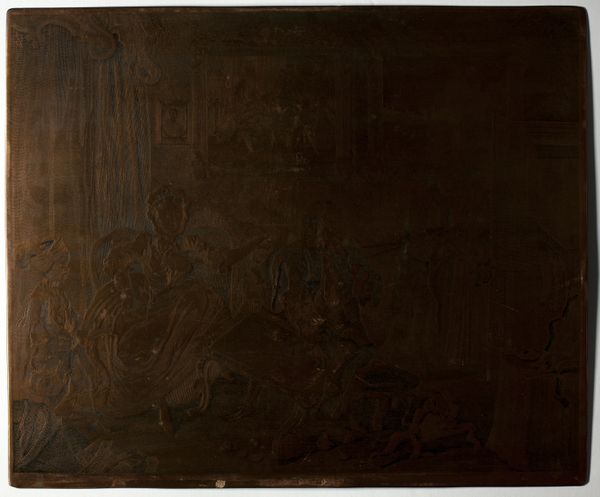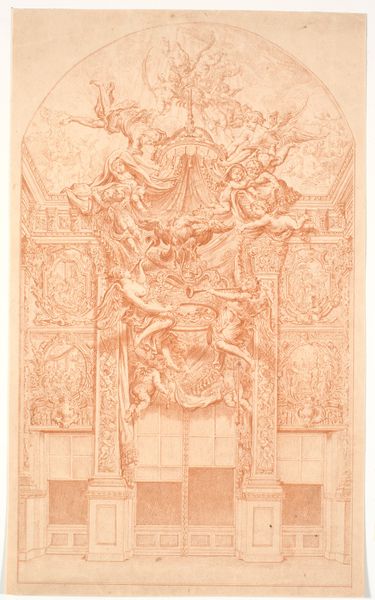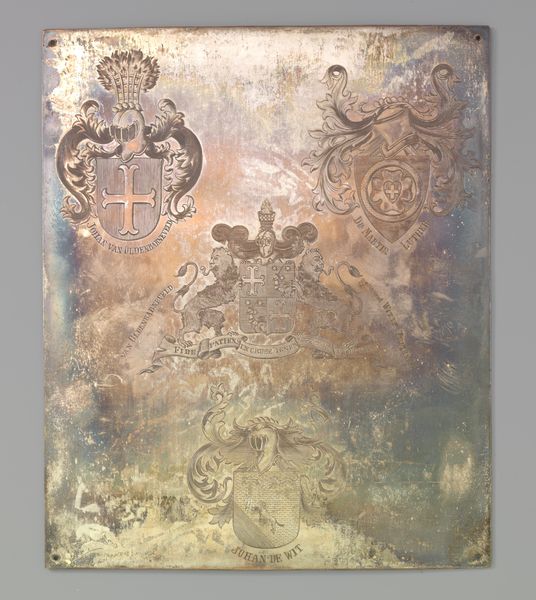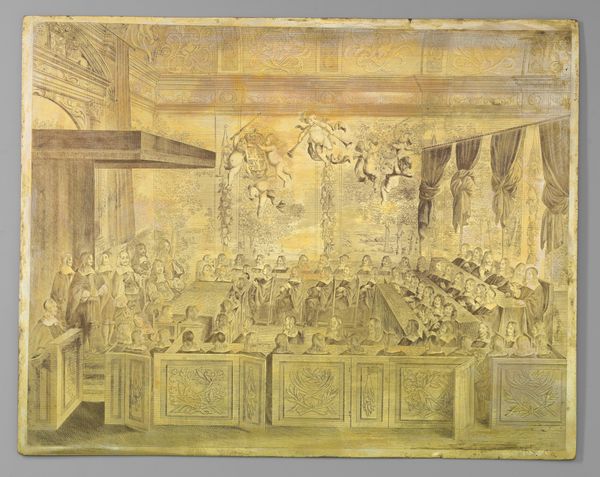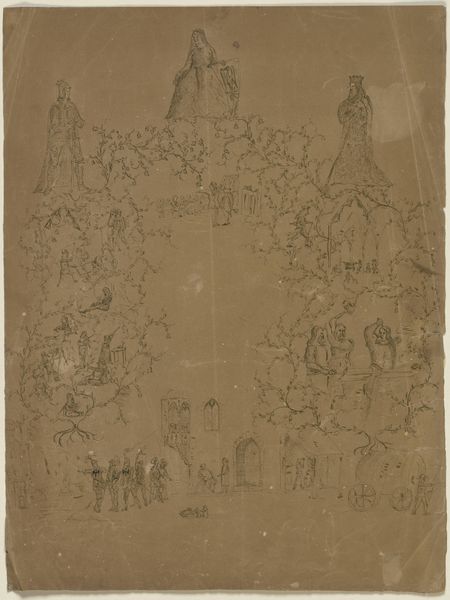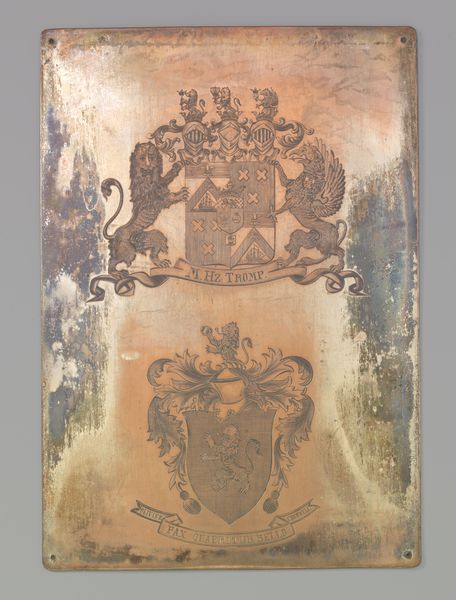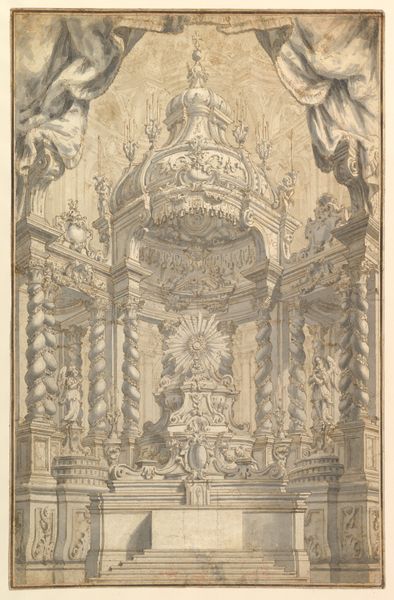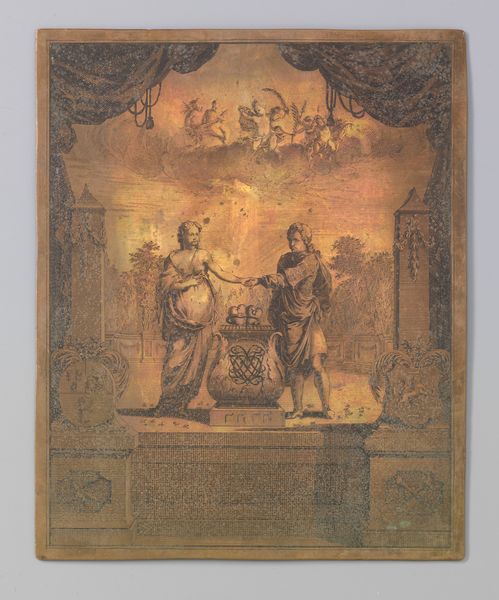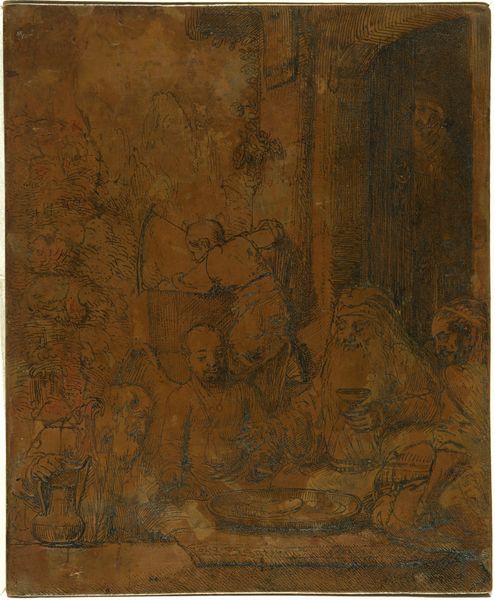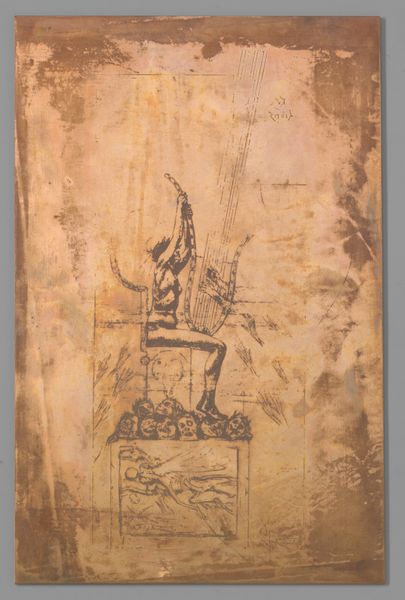
Allegorische voorstelling voor de Internationale Tentoonstelling te Amsterdam, 1883 c. 1883
0:00
0:00
painting, watercolor
#
water colours
#
allegory
#
narrative-art
#
painting
#
watercolor
#
classicism
#
history-painting
#
watercolor
Dimensions: height 520 mm, width 650 mm
Copyright: Rijks Museum: Open Domain
Editor: This is a watercolor painting by G. Acronius, created around 1883, titled "Allegorische voorstelling voor de Internationale Tentoonstelling te Amsterdam, 1883". It depicts a somewhat faded, yet elaborate allegorical scene. What's most striking to you about its historical context? Curator: Well, considering it was designed for the Amsterdam International Exhibition, it’s essentially a piece of promotional material, elevated to high art. Look at how Classicism, a style associated with power and stability, is employed here. How do you think that choice reflects the ambitions of the exhibition and Amsterdam as a host city? Editor: I guess it was trying to project an image of sophistication and historical importance. But wouldn't something more modern have been fitting for an international exhibition? Curator: That's a great question! It tells us a lot about the societal expectations of the time. Organizers likely believed Classicism provided a veneer of timeless prestige, suggesting that Amsterdam and the Netherlands were rooted in established cultural values. Do you see how that contrasts with the exhibition's supposed celebration of the "new"? Editor: Yeah, I get it. It's like using history to validate the present. It is interesting how the form of the classical style communicates different values depending on the moment in time and cultural forces, like marketing! Curator: Precisely! And the history of exhibitions like this demonstrates how intertwined art and politics always are, shaping public perception through carefully curated imagery. This wasn’t just art for art’s sake; it was art *for* national and international image-making. Editor: So, beyond aesthetics, this painting serves as a visual document of late 19th-century societal values and ambitions, tying in the relationship between cultural power and national identity. That really shifts my perspective on promotional art! Curator: Indeed. By examining these layers, we begin to understand how seemingly simple artworks like this hold complex narratives about the forces shaping society at any given moment.
Comments
No comments
Be the first to comment and join the conversation on the ultimate creative platform.
